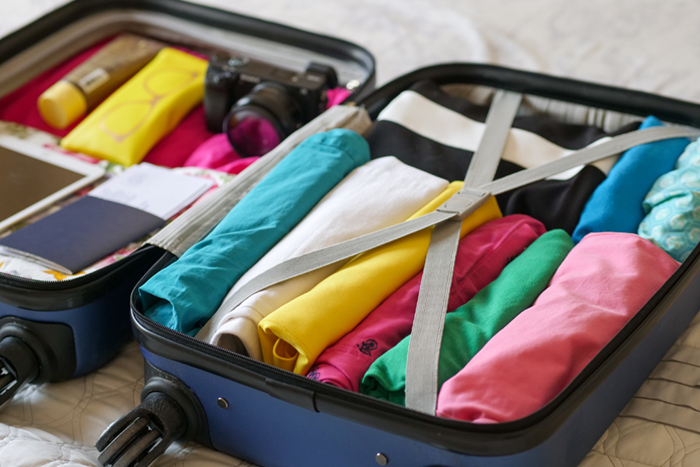Eco-Friendly Packing Tips
4 min read
There’s an abundance of tips to be found on how to travel more sustainably – but there’s also ways to achieve this before even setting foot out of the door. Packing for a trip away can be a challenging business – especially if you’re making an effort to be more eco-conscious about consumption and waste.
From last minute panic-buys to overstuffed suitcases, it can be all-too easy to get swept up in the stresses of preparing for a trip away.this guide provides a handy checklist of the most sustainable essentials to bring with you on your trip so that you can focus on what matters most: fun and relaxation.
Pack Smart
It isn’t just about what you pack, it’s also how you pack: easy-care clothing that doesn’t require ironing helps save on electricity (and valuable time). For formal attire, gowns can be rolled into garment bags. Packing separates like jackets and shirts can be a little more challenging, which is where this guide on how to pack a suit can help.
Making a packing list can also help minimize the number of items you bring with you. While this may sound obvious, even simple measures like these can quickly be forgotten in the process of planning a vacation. If you haven’t already, get a piece of paper (or use the notes app on your phone), and get started:
Your Packing List
The key to an effective packing list is to break it down into categories, so that items can be gathered all at once and checked off. Examples might include:
- Clothing and accessories
- Bathroom products
- Documents (such as passports)
- Devices/tech
- Essentials (such as your house keys)
Not only does this help to keep you organized while packing, but it also reduces the likelihood of buying “emergency” items at the airport or at your destination that you may have forgotten to pack, which also means less consumption, and a lighter suitcase.
Travel Light
Packing a minimal number of items isn’t just about saving space in your suitcase, it can also help to save on carbon emissions. Packing light helps to lower the overall weight of aircrafts, and the lighter the luggage, the less fuel will be needed to fly the plane.
In terms of other items, consider downsizing the number of electrical items you bring that can help to save energy. Consider swapping plastic-packaged toiletries for more eco-friendly options such as shampoo bars and cleansers.
Streamline your Clothing
While the idea of buying a brand-new set of clothes for a trip away might sound appealing, whether you need them is another matter. Instead, open your closet and see what’s already there. Chances are, you’ll already have your vacation wardrobe ready to go.
The clothing you pack depends on various factors (like how cold it will be at your destination). A good rule to follow is the “5, 4, 3, 2, 1” method, which can help you create a mini portable capsule closet (try to stick to a palette of neutral colors so everything matches):
- Five tee shirts or other tops
- Four sets of pants or skirts
- Three sets of shoes and three dresses (optional)
- Two swimsuits or swim shorts and two bags
- One hat and one pair of sunglasses
Another factor to consider is how long you’re likely to stay at your destination, and what the options are there in terms of laundering. Take care to pack items that won’t crease, and which wash easily without having to be taken to a dry cleaners.
Minimize Waste
A zero-waste kit containing items like refillable water bottles and reusable coffee cups can help to save on unnecessary waste when visiting cafes or restaurants, plus they’re easy to use when you’re out and about. In some countries where drinking tap water is not recommended, purify the water by boiling or filtering rather than purchasing spring water in disposable bottles.
Other ways to minimize waste include using reusable totes instead of plastic shopping bags and decanting any liquid toiletries you bring into containers (instead of buying travel-sized versions at the airport). It can also help to learn about the local recycling schemes at your chosen destination before you go.
Consider Slow Travel
One of the best ways to lower carbon emissions is by slow travel, which can involve taking a staycation or using alternative modes of transportation instead of flying to get to your destination. Another method is to check to see whether there is a local bike rental service you can use for a greener (and fun) way to get around.



